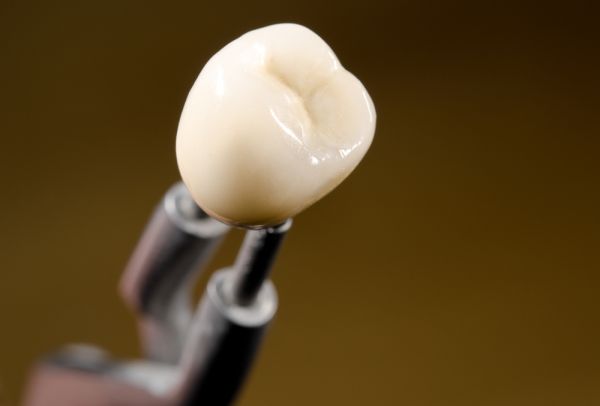Healing Process for Implants Before Crown Placement

When a patient has dental implants put in, there is a short healing period between implant surgery and permanent crown placement. This period, usually lasting anywhere from four to six months, is crucial to the success of the implant.
The amount of time between implant surgery and crown placement differs from patient to patient and can be shorter or longer depending on each situation. The amount of healing time after implant surgery depends on a few key factors, such as oral health, overall health, whether bone grafting or extraction is needed and patient age.
What are dental implants?
Dental implants are artificial tooth roots that are surgically inserted directly into the jawbone where tooth loss has occurred. Implants are made up of three different parts: the post, the abutment and the restoration.
The implant post is a screw-like metal rod that is inserted directly into the jaw bone. The post acts as the new tooth roots. The entirety of the implant post sits below the gum line. The abutment is a small peg-like structure that is used as a connector between post and restoration. The abutment sits just above the gum line. After a healing period, the restoration is placed above the abutment. The restoration is the visible part of the implant, usually a dental crown.
Dental implants are the most effective and unique form of tooth replacement, as these prosthetic teeth effectively replace every part of the natural tooth. Other tooth replacement methods such as dentures or bridges do not utilize the jawbone for support. Because implants are the only tooth-replacement method that utilizes the jawbone, the jaw remains healthy and in use. Keeping the jawbone active prevents deterioration of the bone, helping to maintain oral health and facial shape.
Why is there healing time between surgery and crown placement?
In the time between implant surgery and crown placement, a process known as osseointegration must first occur. Osseointegration refers to the healing of the jaw bone around the implant post. Implant posts are made up of titanium, a metal that is used for its unique ability to fuse with living bone. Until osseointegration occurs, the implant post is not able to bear the weight nor pressure of a permanent restoration. If proper osseointegration occurs, this proves that the implant is stable enough to support a crown.
Osseointegration can take anywhere from four to six months to complete. At this point, if no issues have arisen, crown placement can move forward and the patient can use their new dental implant as one would a natural tooth.
However, some conditions can affect the outcome of successful implant surgery and crown placement. Health concerns like diabetes and osteoporosis will need to be noted before any implant surgery can take place. Some patients may need bone grafting in order to receive an implant. Age, patient family history and oral health are some key factors that determine healing time, as well.
Do you need dental implants?
The process of dental implant surgery along with crown placement is different for every individual. The only way to find out your exact treatment plan is to have a consultation with a dentist. Give our office a call today to set up an appointment and get your smile back.
Request an appointment here: https://riverfallsfamilydental.com or call River Falls Family Dental at (812) 962-7342 for an appointment in our New Albany office.
Check out what others are saying about our services on Yelp: Read our Yelp reviews.
Related Posts
A damaged tooth can be uncomfortable and make eating difficult, but quick treatment can restore function and appearance. An emergency dentist is a general dentist who offers fast, effective care to address urgent dental concerns. Their goal is to protect the tooth and prevent further complications. Whether caused by an accident, infection, or another unexpected…
General dentists are the primary dental professionals people visit once or twice per year for oral health care. According to the American Dental Association, or ADA, biannual appointments are necessary to protect the integrity of your oral health, regardless of age. During these appointments, the general dentist and their team perform check-ups and recommend preventative…
Tooth loss can affect how you eat and speak, as well as how your smile looks. Restorative solutions, like implant crowns, are important for maintaining your dental and overall health. Implant crowns are strong and resemble natural teeth, blending well with surrounding teeth. They imitate the structure of real teeth, providing long-term benefits for those…
Your general dentist may tell you that you may need a dental implant someday soon. The idea of getting an artificial tooth can be intimidating or even scary. Your consultation will give you the chance to clarify some things about the procedure. Here are some questions you can ask your general dentist during that first…
